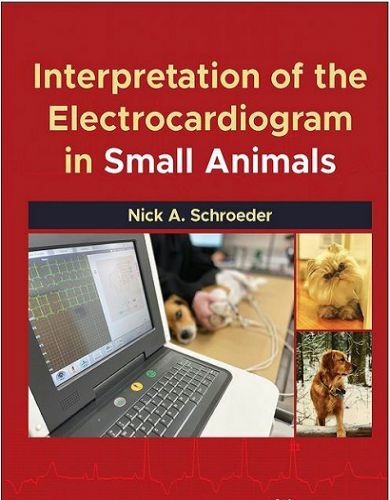Interpretation of the Electrocardiogram in Small Animals
by

Interpretation of the Electrocardiogram in Small Animals delivers a simplified and accessible approach to electrocardiography interpretation for veterinarians treating dogs and cats. This practical manual covers a comprehensive list of arrhythmias and associated phenomena using an easy-to-follow format, with hundreds of electrocardiograms and ladder diagrams supporting the text.
The book focuses on the clinical applications of electrocardiographic interpretation, with less emphasis on physics and subcellular mechanisms, making the book a useful patient-side resource. Interpretation of the Electrocardiogram in Small Animals offers readers an up-to-date understanding and knowledge of common and rare phenomena alike. Common Clinical Presentations in Dogs and Cats by Ryane
Beginning with a description of the single cardiac cycle as illustrated by surface EKG, the book moves on to describe variations on the P-QRS-T complex that occur in response to chamber enlargement and hypertrophy. Readers will also benefit from the inclusion of:
- A detailed discussion of aberrancy and its differentiation from ventricular ectopy
- A thorough exploration of arrhythmias and conduction disorders including escape mechanisms, atrioventricular block, extrasystoles, accelerated rhythms, tachycardias, flutter and fibrillation
- An examination of pacemaker basics, as well as a few common abnormalities and pacemaker problems, including under sensing, oversensing, and failure to capture
Interpretation of the Electrocardiogram in Small Animals is a convenient, one-stop reference for the interpretation of electrocardiography in small animals for veterinary students, residents, and specialists as well as for small animal general practitioners.
The easiest thing is to start with the single cardiac cycle as illustrated by surface EKG. From there, it follows to explore variations in the P-QRS-T complex that occur in response to chamber enlargement and hypertrophy as well as electrolyte abnormalities and external influences such as pericardial effusion, body temperature, or neurologic status. Moving on, aberration of the P-QRS-T is discussed since it basically concerns the appearance of the single cycle.
Arrhythmias form the bulk of the discussion and sorting out where to discuss certain arrhythmias is not always so clear cut. I opted for a top to bottom, slow to fast approach to the arrhythmias. I followed up with artificial pacemakers. Inevitably, some topics overlap and it can be difficult to decide where, when, and in how much detail should a given concept be discussed. All of the tracings have been taken from real dogs and cats in a clinical setting. All of the illustrations are the work of the author.
Direct Link For Paid Membership: –
